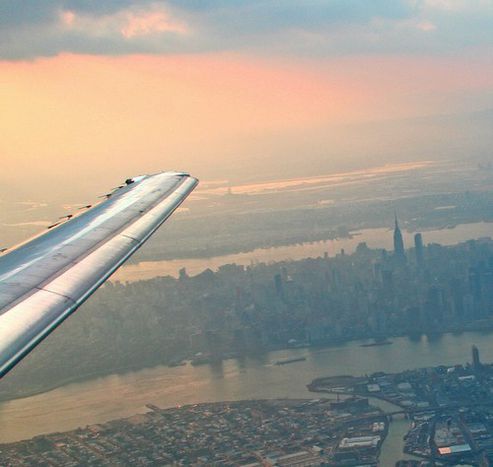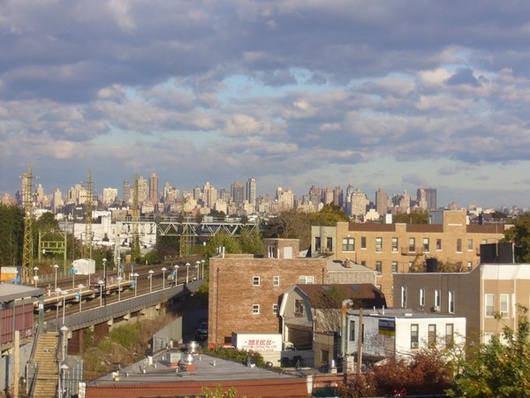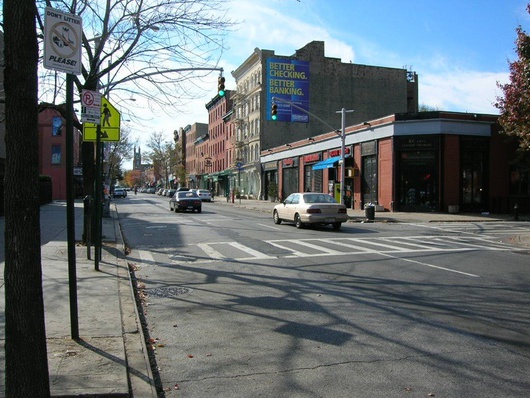
The Bronx, another European overseas department
Published on
Well, almost. As the fountain on the north lawn of the White House ran green in celebration of St Patrick's Day on 17 March, we take a look at how newcomers from Europe have breathed new life into old ethnic neighbourhoods in New York’s five boroughs, long a destination for immigrations. With the EU at 27 and Brussels far across the ocean, is Europe but an abstract notion?
The Bronx neighbourhood of Morris Park is home to many of the 70, 000 Italian-born New Yorkers. Although immigration from Italy has dried up, Italian is still heard on the streets, cured meats hang in windows and some Italian-Americans have even discovered a taste for the EU. Dr. Joseph Scelsa, president of the Italian American museum, believes that many in his community have realised the euro-wide benefits from re-claiming their Italian citizenship. ‘There is still a European connection,’ he says. ‘My son is a fourth-generation American, but I encouraged him to get his citizenship. As an architect, being able to work in the European market is a huge asset.’ The highest number of Italian Americans (40%) live in New York's Richmond county, according to a 2000 census by the national Italian American foundation.
EU-NYC
 Meanwhile, over 40 million Americans claim Irish heritage, the Irish African-American new president among them. Recent immigration brings fresh blood to the Irish neighbourhoods of Woodland in the Bronx and the Woodside section of Queens, but the return of the brogue to the hood has not inspired great nostalgia about the EU. Liz Kenny, executive director of the New York Irish center, believes that the recently arrived are certainly becoming American, but are removed from their homeland’s European identity. ‘Its not that they don’t appreciate what the EU has done for their families in Ireland, its just that they have never been part of it,’ she insists. Ironically, an article in The Guardian on 18 March reports that between 2001 and 2007, more people moved from the US to Ireland than vice-versa, according to Ireland's central statistics office.
Meanwhile, over 40 million Americans claim Irish heritage, the Irish African-American new president among them. Recent immigration brings fresh blood to the Irish neighbourhoods of Woodland in the Bronx and the Woodside section of Queens, but the return of the brogue to the hood has not inspired great nostalgia about the EU. Liz Kenny, executive director of the New York Irish center, believes that the recently arrived are certainly becoming American, but are removed from their homeland’s European identity. ‘Its not that they don’t appreciate what the EU has done for their families in Ireland, its just that they have never been part of it,’ she insists. Ironically, an article in The Guardian on 18 March reports that between 2001 and 2007, more people moved from the US to Ireland than vice-versa, according to Ireland's central statistics office.
New EU members are well represented in the boroughs. Around 20, 000 Romanians immigrants live in the Sunnyside and Ridgewood areas of Queens, as does a Bulgarian community of 4, 000. Astoria in Queens is known for its large Greek population of almost 30, 000 - Greek expatriates only recently got the right to vote in Greek national elections from their country of residence - but enclaves of Czechs and Slovaks also exist. Further south in Brooklyn, many of the 65, 000 Poland-born immigrants in New York have made their home in the Greenpoint neighborhood, living side-by-side with a dizzying mix of Latinos, hipsters and Hassidic Jews originally from Transylvania. Lastly, a small Baltic community is dispersed among the some 150, 000 residents from the former Soviet Union living in New York.
Whilst the French, Germans and Brits can’t claim any neighbourhood of their own, Smith Street in Brooklyn’s Cobble Hill has become somewhat of a French outpost. On 14 July, pétanque courts are set up in the middle of the street – it almost seems the chain-smoking boule throwers are beamed in directly from Marseilles.
Home sweet home
 A network of social associations and clubs thrive in the European neighbourhoods of New York’s boroughs. From simple storefronts to large community halls, these institutions offer vital services for recent arrivals. But for that sweet taste of home, nothing is better than food, booze and music, and there are numerous establishments. Restaurants in Sunnyside serve up Mămăligă (a Romanian dish of yellow maize, like Italian polenta) and Muzica Lautareasca preformed by local gypsy musicians, while the venerable Bohemian Hall in Queens provides Staropramen beer and wild stringband music for Czechs and Slovaks. Greeks can boogie to bouzoukis in Astoria, while Polish youth flock to nightclubs in Greenpoint and world-class Irish musicians frequent traditional music sessions in pubs throughout the Bronx.
A network of social associations and clubs thrive in the European neighbourhoods of New York’s boroughs. From simple storefronts to large community halls, these institutions offer vital services for recent arrivals. But for that sweet taste of home, nothing is better than food, booze and music, and there are numerous establishments. Restaurants in Sunnyside serve up Mămăligă (a Romanian dish of yellow maize, like Italian polenta) and Muzica Lautareasca preformed by local gypsy musicians, while the venerable Bohemian Hall in Queens provides Staropramen beer and wild stringband music for Czechs and Slovaks. Greeks can boogie to bouzoukis in Astoria, while Polish youth flock to nightclubs in Greenpoint and world-class Irish musicians frequent traditional music sessions in pubs throughout the Bronx.
Gita Klinderová of the Bohemian benevolent & literary association (BBLA) believes such establishments are vital for Czechs that simply don’t have the time to prepare complicated traditional dishes. ‘We are a nation that likes our beer, so it makes sense to get together in a bar,’ she jokes. But are Czechs at the Bohemian Hall toasting the current Czech presidency of the European Union? Probably not. ‘We are aware that we are at the head of the EU, but its not part of our day-to-day lives,’ Klinderová adds. Sixty years ago Europe lay in ashes and New York’s European immigrants looked towards a bright future in the USA. Today, citizens from a strong and expanding EU are to be found throughout the city, but it remains to be seen if the Union will play even a symbolic role in their communities.



